ABSTRACT
Objective: To assess Emergency Department patients' knowledge about their medications.
Methods: The study was conducted at King Hussein Medical Center-Emergency Department between November 2005 and January 2006. A specially designed interview schedule was used by the researchers to collect data from a total of 438 adult patients who satisfied the inclusion criteria for the study.
Results: Demographic characteristics of the sample included mean age of 50.8 years (range 16-81 years). Out of 438 patients, 282 (64%) were male. The majority of the patients (48%) had attained intermediate education (elementary-secondary) whereas 37% were illiterate, and only 15% held a university degree. The three most common recorded chronic diseases were cardiovascular (34%), cardiovascular with diabetes (11%), and respiratory diseases (11%). The mean number of medications per patient was 3.9 (range 1-8). The study found that only 78 (18%) patients knew all their medication names, 20 (5%) patients knew all their medication doses and 224 (51%) patients knew the medication time to be taken. Only 156 (36%) patients were able to recognize their medications by names whereas 219 (50%) relied on other means like shape, colour, pill size, etc. About 223 (51%) patients did not know the purpose of each medication they were using and only 29% of the patients brought a list of their medications to the Emergency Department. The most common source of information was physicians (45%), followed by pharmacists (34%) and nurses (9%). The study also found that the more educated the patients were the more likely they were able to recall their medications’ names, times, doses, and purposes. Notably patients with cardiovascular diseases were more strict in to bringing their medication list (56%) than those with other chronic diseases.
Conclusion: There was poor knowledge of medications among the study group, and only less than one-third of them brought a list of their medications to the Emergency Department. Medication knowledge decreased, as the number of medications increased.
Key words: Emergency department, Knowledge, Medications, Patients.
JRMS April 2008, 15(1): 45-50Introduction Poor medication knowledge may lead to noncompliance with medication regimens, medication errors, increase Emergency Department visits and health care cost.(1-7) Around 30-50% of patients with a chronic disease do not take their medications as prescribed; the cost of noncompliance in USA has been estimated to be $100 billion a year(8) while the total cost associated with medical errors may be as high as $50 billion a year.(9) Effective counseling of the patients on their disease state and medications will increase medication knowledge and improve adherence to their treatment regimens.(10-13)
The literature indicates existence of an association between medication counseling and reduction of hospitalization stay days. Other studies report a positive association between such counseling and reduction in the rate of readmissions.(14)
As the number and potency of available drugs increases, medication complexity rises, leading to a variety of drug related problems.(15,16) In 2004 the American Pharmacists Association reported that there were more than 33,000 trade names for medication in USA and more than 9,000 generic names(17) therefore, patients can no longer refer to their medication by physical description (color, size, shape).(18)
Knowledge of the patient’s medications by the Emergency Department physicians is very important because it influences therapeutic decisions, as the majority of patients are unknown to the Emergency Department physician.(18,19)
The aim of this study was to assess patient’s knowledge about their medications during their visits to the Emergency Department.
MethodsThis study was conducted at King Hussein Medical Center (KHMC) Emergency Department between November 2005 and January 2006. A specially designed questionnaire (Appendix 1) was completed through direct interview by the researchers with a total of 438 patients who met the inclusion criteria. The inclusion criteria comprised: adult patients; patients suffering from chronic diseases; patients using one or more medication on long term basis; patients presented to the Emergency Department with medical problems. Patients receiving no medication and those presenting with surgical problems were excluded from the study. Verbal consent was obtained from patients.
Data was analyzed using SPSS statistical package.
ResultsThe total number of patients participating in the study was 438. Two hundred and eighty two (64%) were males and 156 (36%) were females. Patients’ ages were between 16-81 years with a mean of 50.8±15.1. About 48% of the study group had intermediate education level (elementary-secondary), whereas 37% were illiterate and only 15% had a university degree (Table I). Results showed that the three most common recorded chronic diseases were cardiovascular (34%) (ischaemic heart disease, hypertension, stroke), diabetes and cardiovascular (11%), and respiratory diseases (11%) (Asthma, chronic obstructive pulmonary disease) (Fig. 1).
Table I. Education level of the study group
|
Education level
|
Number
|
%
|
|
University degree
|
65
|
15
|
|
Illiterate
|
164
|
37
|
|
Intermediate education
|
209
|
48
|
|
Total
|
438
|
100
|
 Fig. 1:
Fig. 1: Recorded chronic diseases
GIS: Gastrointestinal System; CVS: Cardiovascular System; Resp: Respiratory; Infec: Infections; Neuro: Neurology; Oncol: Oncology; Nutri: Nutrition; Endo: Endocrinology; DM+CV: Diabetes Mellitus+Cardiovascular Disease; Musculo: Musculoskeletal; CRF: Chronic Renal Failure
The study findings indicated that the mean number of medications being used by the patients was 3.9 with a range of 1-8, and that around 62% of the patients were using four or more medications (Fig. 2).
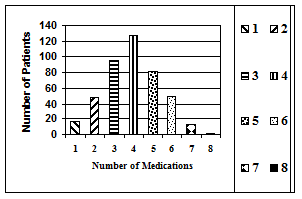 Fig. 2.
Fig. 2. Number of medications used by the study group
Only 78 (18%) patients knew all their medications names, 20 (5%) patients knew all their medications doses, 224 (51%) patients knew their medications’ time to be taken, and that 214 (49%) of the patients knew the purpose of each medication they were using (Fig. 3).
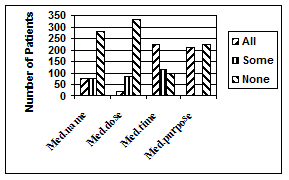 Fig. 3.
Fig. 3. Patient’s knowledge for essential information about their medications
The study found that only 156 (36%) patients were able to recognize their medications by names whereas 219 (50%) patients relied on other means like shape, colour, pill size etc. (Table II).
Table II. Medication recognition by patients
|
Means of recognition
|
Number
|
%
|
|
With help
|
62
|
14
|
|
By names
|
156
|
36
|
|
Other means (shape, colour, pill size)
|
219
|
50
|
|
Total
|
438
|
100
|
It is interesting to know that only 29% of the patients who accessed the emergency department brought a list of their regular maintenance medications. The most common source of patient’s information (knowledge) was physicians (n=194, 45%), followed by pharmacists (n=149, 34%) and least of all was from nurses (n=39, 9%) (Fig. 4).
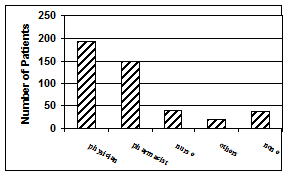
Fig. 4. Source of knowledge provided to the study group
This study also found the more educated the patients were the more likely they were able to recall their medications’ names, times, doses, and purposes (Fig. 5). A reverse trend was identified between increasing number of medications being used by the patients and their ability to recall these medications by name (Fig. 6).
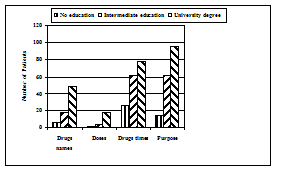
Fig. 5. Effect of education level on medication knowledge
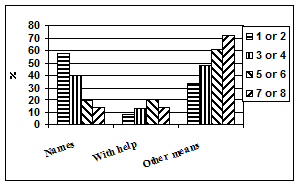 Fig. 6.
Fig. 6. Effect of medications number on medication recognition
It was notable that patients with cardiovascular diseases were more strict in brining their medication list (56%) than those with other chronic diseases (Fig.7).
 Fig. 7.
Fig. 7. Relation between the nature of the disease and bringing a list of medication
DiscussionThe short time period in which data was collected demonstrates the high turnover of patients in the Emergency Department, particularly when considering that only those adult patients with chronic diseases who presented with medical problems were included in the study.
The mean age of the patients in the study was 50.8 years, and this is not uncommon as those patients are usually associated with multiple pathology and polypharmacy.
The study found that the most common chronic diseases among the patients in the study was cardiovascular diseases (34%), this finding can be supported and explained by the fact that cardiovascular diseases are the leading cause of death in Jordan.(20) The majority of patients in the study (62%) were using four or more medications. This is probably due to the nature of the drugs used for cardiovascular diseases including antianginal, antihyperlipidemic, one or more antihypertensives, diuretics etc.
Approximately half of the patients referred to their medication by means of physical description, which is comparable to another study where patients frequently referred to their medications by drug appearance rather than drug name even if they knew the medication’s name.(21) The results indicated poor knowledge of the patients concerning the details of their medications. The education level of the patients and the number of medications being used may explain this.
The study showed that poor attention is paid to patient counseling by the pharmacist although, many studies showed that medication reconciliation and counseling by pharmacist decreases medication errors, adverse events, unnecessary drugs and improves patient compliance.(7,13,15,22,23)
Having a list of the medications (medication card) will make it easier for the Emergency physician to deal with these cases. Unfortunately, less than one-third of the patients had a list, and the majority of these (56%) were those with cardiovascular diseases.
This may be partly explained by the relatively increased prevalence of these diseases in the study group. This finding comparable to the study conducted by Vilke et al were 48% of the patients presented to the Emergency Department could recall or have a list of their medications.(18) Further research studying the effect of pharmacist interventions on patients medications is required in order to enhance the role of pharmacists in patient education and counseling.
A limitation of the study was that the high illiteracy rate in the sample (37%) which affected the patients’ knowledge about their medications negatively.
Conclusion There was poor knowledge of medications among the study group, and only less than one-third of them brought a list of their medications to the Emergency Department. Medication knowledge decreased, as the number of medications increased.
AcknowledgementAuthors are grateful for the patients who participated in the study and for the Emergency Department staff in (KHMC) for their assistance.
References
1. Hope CJ, Wu J, Tu W, et al. Association of medication adherence, knowledge, and skills with emergency department visits by adults 50 years or older with congestive heart failure. Am J Health Syst pharm 2004; 61(19): 2043-2049.
2. Britten N, Stevenson FA, Barry CA, et al. Misunderstandings in prescribing decisions in general practice: qualitative study. BMJ 2000; 19: 320(7233):484-488.
3. Chung MK, Bartfield JM. Knowledge of prescription medications among elderly emergency department patients. Ann Emer Med 2000; 39(6): 605-608.
4.Louis-Simonet M, Kossovsky MP, Sarasin FP, et al. Effects of a structured patient-centered discharge interview on patients’ knowledge about their medications.Am J Med 2004; 15:117(8):563-568.
5. Cullen G, Kelly E, Murray FE. Patients’ knowledge of adverse reactions to current medications. Br J Clin Pharmacol 2006; 62(2):232-236.
6.Shahin SH, Daly EB. Knowledge, attitudes and beliefs about psychotropic medication among Saudi hospitalized psychiatric patients. Int J Nurs Stud 1999; 36(1):51-55.
7. Okuno J, Yanagi H, Tomura S, et al. Compliance and medication knowledge among elderly Japanese home-care recipients. Eur J Clin Pharmacol 1999; 55(2):145-149.
8. Barber N, Parsons J, Clifford S, et al. Patients’ problems with new medication for chronic conditions. Qual Saf Health care 2004; 13(3):172-175.
9. Berman A. Reducing medication errors through naming, labeling, and packaging. J Med Syst 2004; 28(1): 9-29.
10.Ponnusankar S, Surulivelrajan M, Anandamoorthy N, Suresh B. Assessment of impact of medication counseling on patients’ medication knowledge and compliance in an outpatient clinic in South India. Patients Educ Couns 2004; 54(1): 55-60.
11.Alibhai SM, Han RK, Naglie G. Medication education of acutely hospitalized older patients. J Gen Intern Med 1999; 14(10): 610-616.
12. Kerzman H, Baron-Epel O, Toren O. What do discharged patients know about their medication? Patient Educ Couns 2005; 56(3): 276-282.
13. Akici A, Kalaca S, Ugurlu MU, et al. Patient knowledge about drugs prescribed at primary healthcare facilities. Pharmacoepidemiol Drug Saf 2004; 13(12): 871-876.
14. Toren O, Kerzman H, koren N, Baron-Epel O. Patients’ knowledge regarding medication therapy and the association with health services utilization. Eur J Cardiovasc Nurs 2006; 5(4): 311-316.
15.Paulino EI, Bouvy ML, Gastelurrutia MA, et al. Drug related problems identified by European community pharmacists in patients discharged from hospital. Pharm World Sci 2004; 26(6): 353-360.
16. Hayes KS. Adding medications in the emergency department: Effect on knowledge of medications in older adults. J Emerg Nurs 1999; 25(3): 178-182.
17. American Hospital Association; American Society of Health-System Pharmacists; Hospitals & Health Networks. Medication Safety issue brief, Look-alike, sound-alike drugs. Hosp Health Netw 2005; 79(10): 57-58.
18.Vilke GM, Marino A, Iskander J, Chan TC. Emergency department patient knowledge of medications. J Emerg Med 2000; 19(4): 327-330.
19. Heininger-Rothbucher D, Daxecker M, Ulmer H, et al. Problematic drugs in elderly patients presenting to a European emergency room. Eur J Intern Med 2003; 14(6): 372-376.
20.Omran S, Al-Hassan M. Gender differences in signs and symptoms presentation and treatment of Jordanian myocardial infarction patients. International Journal of Nursing Practice 2006; 12: 198-204.
21.Manning DM, O’Meara JG, Williams AR, et al. 3D: a tool for medication discharge education. Qual Saf Health Care 2007; 16(1): 71-76.
22. Whittington J, Cohen H. OSF Healthcare’s journey in patient safety. Quality Manage Health Care 2004; 13: 53-59.
23. Chumney EC, Robinson LC. The effects of pharmacist interventions on patients with polypharmacy. Pharmacy Practice 2006; 4(3): 103-109.
|
Appendix 1
|
|
INTERVIEW
SCHEDULE
Patients’ Knowledge about their
Medications during Emergency Visits
1- Age:
2- Sex:
3- Level of education:
4- What chronic disease(s) do you have?
5- How many medications do you take?
6- Can you list your medications? a- Yes b- No
If yes:-
7- What are your medication names? a- All
b- Some c-
None
8- What are your medication doses? a- All b- Some c- None
9- What is your medication time to be
taken? a- All b- Some c-None
If No:-
10- How do you recognize your
medications?
11- Do you recognize the purpose of each
drug?
12- From where you obtain knowledge about your
drugs? Physician, Pharmacist, Nurse, Others (Specify).
13- Did the patient bring his
medications or a list of them to the Emergency Department?
|